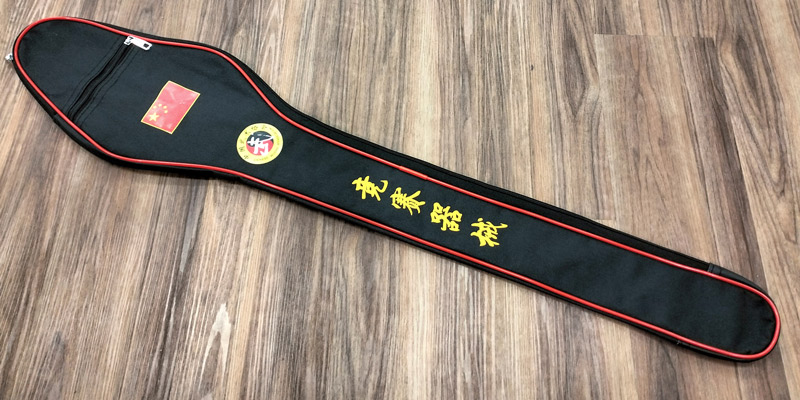IWUF Approved Competition Southern Broadsword (Nandao)
| Qty: | Add to cart |
- IWUF (International Wushu Federation) Standardised Wushu Competition Southern Broadsword
- S-shaped guard sits loosely to allow for clanging, necessary for performance and competition
- Depending on Sword length weight is approx. 445 - 500 grams for easy maneuverability
- Spine on blade for added strength, without compromising great flexibility through the blade
- Handle is left bare, for athletes and practitioners to add their preferred grip-tape
- Tape around the ring can be removed so handle position can be adjusted to suit the preference of the individual athlete (the tape cannot be reused and will have to be purchased from a sports store)
- Comes with a black, padded carry bag with shoulder strap and zippered pocket
The international governing body for Chinese Martial Arts competition, the International Wushu Federation (IWUF), has established standards for swords
in competition. If you are intending to compete, please make sure you are using a weapon that complies with the regulations.
For competition purposes, when performing standardised Nandao routines, the sword tip should be no lower than the bottom of the jaw when held in the left hand.
You must be over 18 to purchase any weapon or knife product.Weapons are subject to purchase and ownership conditions which will vary according to State Laws. Currently, most Australian states do not require a permit for sword purchase and ownership however in Victoria you need to comply with the Control of Weapons Act 1990. For more information please contact the Police Department in your State or Territory.
For all Victorian purchases, you must provide us with a copy of your weapons permit/license and your current drivers license. These can be emailed to us at info@jinli.com.au. Failure to supply the necessary documentation will result in cancellation of your order. In the event of order cancellation, Jinli Wushu-Tai Chi Pty Ltd reserves the right to withhold any and all Paypal transaction charges associated with your order prior to issuing a refund.
More About Southern Broadsword (Nandao)
In the 1980’s the Chinese Wushu Association wanted to find a short weapon for Southern Style competition and decided to create a new type of sword with its origins in such things as Butterfly Sword and Northern Dao, so they found a sword maker who created a prototype of the Nandao for coaches and athletes to trial. It was important that the weapon could feature wrapping, twining, slicing, chopping, parrying, interception and sweeping. The prototype met all of these requirements and members of the Beijing Wushu Team, Ka Li Abdul and Xu Yi, were asked to create a routine using the new weapon. After discussion and revisions, the first Nando routine was born and accepted into contemporary wushu by the International Wushu Federation in 1992. It has since become one of the most popular events at competitions.
The Southern Broadsword must have a butterfly sword shaped blade, an S-guard that can accommodate a reverse grip, and be capable of use both double- and single-handed.
The development and use of the Nandao is another wonderful symbol of our art’s continued development and growth.








